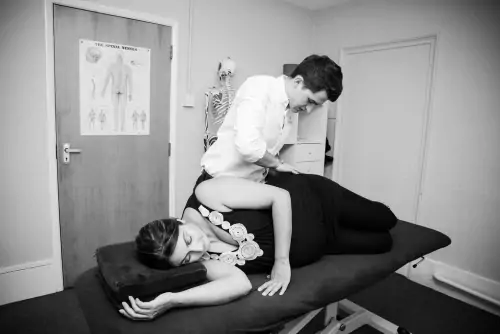Sports Treatments
Our Sports Therapy team offer high levels of expertise and experience to keep your performance at optimum level, offering sports massage and injury treatment, nutritional therapy and clinical Pilates.
Whether you’re an enthusiastic amateur or an elite professional, an Osteopath can help with the prevention and treatment of common sporting injuries. Osteopaths consider all the factors, which may have led up to and contributed to the injury: these are often just as important as the injury itself and may slow or even prevent total and speedy repair.
Osteopathic Treatment for Sports Injuries
Osteopathy is particularly suited to assisting the sportsman or sportswoman with complaints as varied as back pain and tennis elbow, or hip problems and recurrent muscle injuries. Our Osteopaths will also assess the body to determine sports Injury Prevention and Management moving forward. By using manual techniques, the osteopath provides the body with the best environment for repair, and enables it to function at its best.
Advice on self-care is always given to maximise the effects of treatment and minimise the possibility of recurrence. This may include specific exercises, technique tips, postural advice etc.
Our Sports Injury Osteopaths in Action...Case Studies:
"A man in his late fifties, running at senior club level, had a calf injury in his right leg. After assessment by a variety of therapists he consulted an osteopath who discovered that the problem had been caused by a change of job two years previously. The man’s new job required a lot of standing up, and examination revealed his tendency to stand with his right leg slightly bent. As a result the calf muscle had started to shorten on the right hand side. Osteopathic treatment helped him to stand with a straight posture, reducing the tension in the right calf. A stretching routine was then prescribed and recovery from the injury was quickly achieved."
"A forty year old woman, playing badminton and tennis at county level, had been suffering from tennis elbow for six months. She was concerned that the worsening pain would force her to give up her sport. Her osteopath discovered that her spine allowed little rotation, and that her shoulder muscles were unusually tight. He treated her neck (from where the nerve supply to the elbow arises), and worked on her shoulder and upper back mobility. This approach reduced the demands on her elbow. Free of pain, and benefiting from greater mobility, she recovered from the injury and was able to play more powerful tennis and badminton shots than ever before."
"A 16 year old footballer, representing his county several times at U18 level, complained of recurrent hamstring injuries and right-sided low back pain over the past two years. This was despite of rest, various treatments and specialists’ opinions where because of unequal leg lengths a heel raise had been recommended, but more widespread symptoms had been created as a result. An osteopath’s opinion was sought and was able to demonstrate that very unusually because of sport, a ‘protective scoliosis’ had already started to become semi-permanent. Thus the heel raise had forced additional stress which the spine was unable to compensate for. Treatment to enable the spine to re-align itself was carried out and a steadily increasing height of heel raise was gradually introduced. Exercises to maintain the developing flexibility helped to maintain the change. Resolution of the back problem also led (as anticipated) to a curtailment of recurrent hamstring injuries."
Sports Massage Fees
| 30min | £38 | ||
| 45min | £44 | ||
| 60min | £50 | ||
| 75min | £60 | ||
| 90min | £66 |


